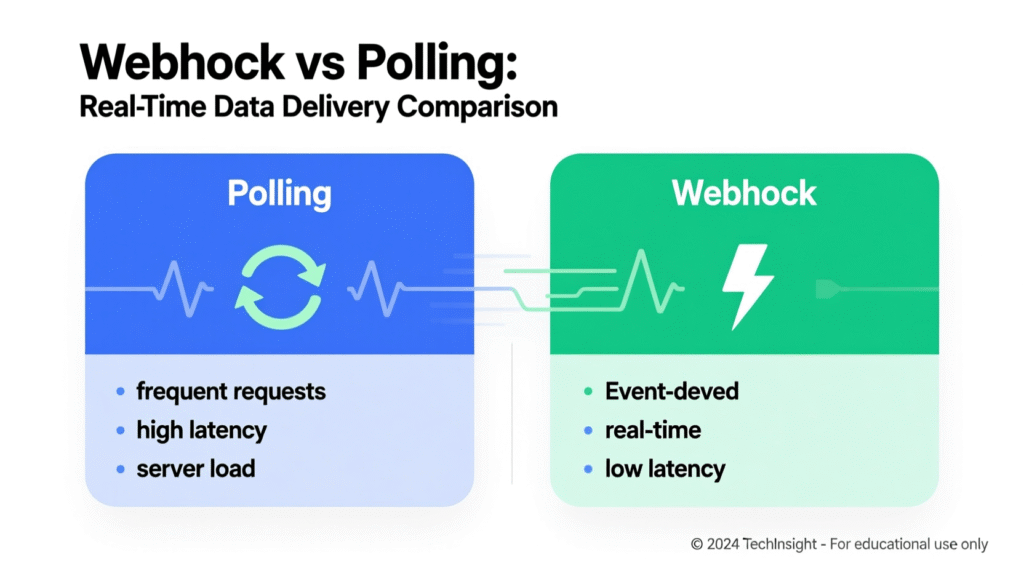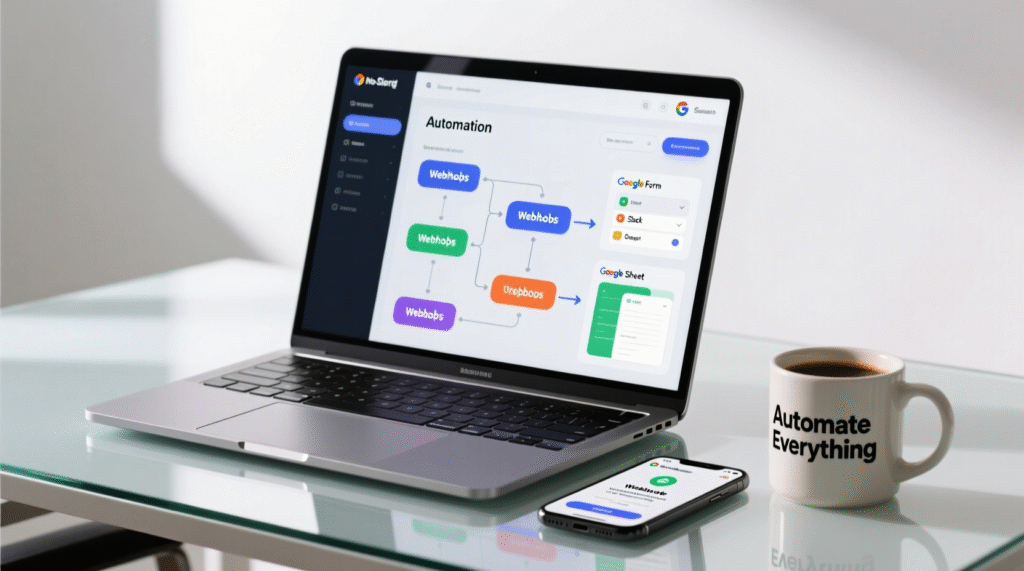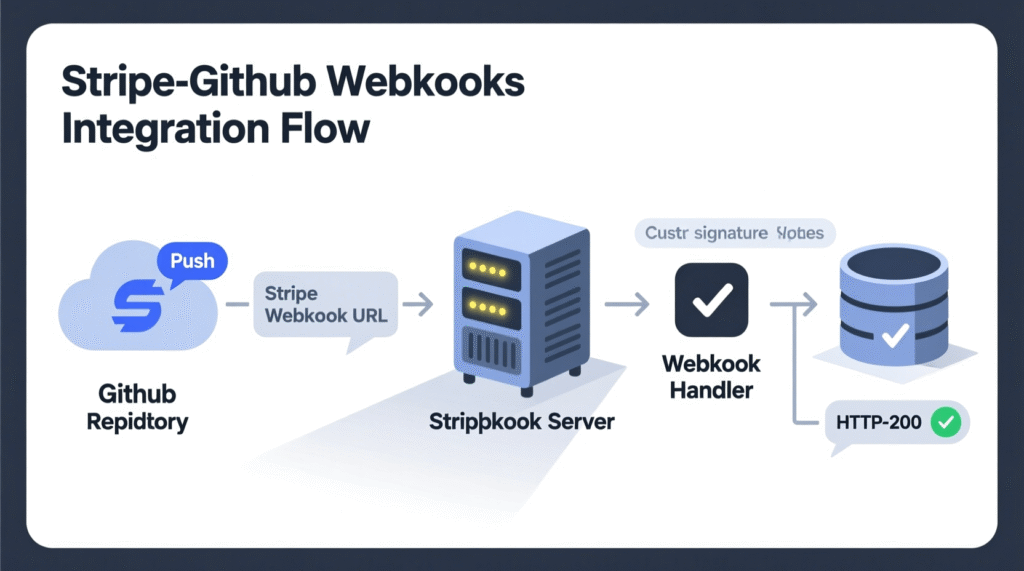Webhooks 101: Real-Time Integrations for Everyone
Webhooks 101: Real-Time Integrations for Everyone

Webhooks 101: Real-Time Integrations for Everyone
If you’ve ever wished two apps could “tap you on the shoulder” the moment something happens without you refreshing or checking a dashboard webhooks are how that magic works. A webhook is a simple, event-driven HTTP message one app sends to another when a specific event occurs, like “payment succeeded” or “new support ticket.” Instead of polling for changes, webhooks deliver real-time updates that trigger workflows right away.
That’s why they power everything from e-commerce receipts to Slack alerts and warehouse automations. Authoritative definitions describe webhooks as lightweight callbacks that notify another system via HTTP when an event fires, often with a small JSON payload.
Adoption keeps rising as teams layer real-time patterns on top of REST APIs. In 2025 Postman reports that 50% of teams use webhooks alongside other patterns like WebSockets and GraphQL.
Postman For non-engineers, services like IFTTT make webhooks approachable, so you can connect 700+ apps with simple triggers and web requests.
In this guide, you’ll learn what webhooks are, how they differ from polling, how to set them up securely, and how to use them with low-code tools. We’ll also share best practices from platforms like GitHub and Stripe, plus real examples you can copy today.
What Are Webhooks (and Why They Matter)?
At their core, webhooks are event notifications delivered over HTTP. An event source (e.g., your payment processor) POSTs a message containing event metadata and payload—to your endpoint URL the instant an event occurs. This saves bandwidth, reduces latency, and keeps systems in sync without constant polling.
Key benefits
Real-time
Instant triggers without scheduled jobs.
Efficient
No constant API polling; payloads arrive only when needed.
Simple
Works with any stack that can receive HTTP POST requests.
Automation-ready
Perfect for no-code tools and CI/CD pipelines.
Webhooks vs Polling: Which Should You Use?
Polling asks an API for updates at intervals; webhooks push events to you as they happen. Choose webhooks when you need fresh, infrequent updates (e.g., payment succeeded). Choose polling when updates are very frequent and you don’t need millisecond freshness (e.g., syncing thousands of ticket updates every minute)

Rule of thumb
Use webhooks for event-driven automation, human notifications, and state changes that must be acted on promptly.
Use polling for high-volume bulk synchronization and backfills.
Core Concepts and Terminology
Event
Something noteworthy has happened (e.g., invoice.paid).
Endpoint
Your HTTPS URL that receives the POST from the provider.
Payload
JSON body describing the event and related data.
Signature
HMAC or similar header to verify authenticity.
Retries
Providers often retry on failure; design for idempotency.
How Webhooks Work (Step-by-Step)
Register your endpoint URL inside the provider (e.g., Stripe/GitHub).
Select events you want (e.g., “payment succeeded,” “issue opened”).
Receive POST requests at your endpoint (usually JSON).
Verify signature to ensure the sender is legit.
Process the event safely and idempotently.
Respond 2xx quickly (within a few seconds) to avoid retries or timeouts.
Retry handling: be ready for duplicate deliveries.
Minimal Example (Pseudo-Code)
Tip
Use a raw body for signature verification (don’t pre-parse/transform the payload before verifying). Most providers offer SDKs and CLIs to help.
Security Best Practices for Webhooks
Verify signatures
Providers include a signature (HMAC/secret). Verify it before trusting payloads; reject if timestamp is stale or signature mismatch.
Require HTTPS and least-privilege
Terminate TLS, isolate your webhook handler, and keep payload scopes minimal.
Idempotency and deduplication
Retries happen. Use idempotency keys (e.g., the event ID or your own key) to ensure repeated deliveries don’t double-process orders. Stripe documents idempotent request semantics explicitly.

Fast ACK, slow work async
Respond 200 OK quickly, then queue long work (e.g., publish to a message broker) to avoid timeouts and redeliveries. GitHub allows manual redelivery and has guidance on failed deliveries.
Rotate secrets and log safely
Never log raw secrets. Rotate shared secrets regularly and alert on signature verification failures.
Reliability Patterns (What the Pros Do)
Dead-letter queues
For failed processing after N attempts.
Backoff
On provider retries; your server should tolerate bursts.
Event versioning
Treat schema changes as additive; validate fields.
Reconciliation jobs
Run periodic backfill to catch missed events.
Observability
Capture event ID, provider timestamp, signature result, and your processing status (success/failure), and enable redelivery when offered.
No-Code and Low-Code: Webhooks for Everyone
You don’t need to be a developer to use webhooks. Tools like IFTTT and workflow platforms can receive or send web requests to trigger automations across hundreds of services. Their webhook triggers typically fire within seconds, making them great for personal or small-business workflows.
Common no-code webhook ideas
New lead in form app → Slack channel alert.
New order in shop → Google Sheet row + email receipt.
Failed payment → Send support ticket + SMS.

Platform Examples (Stripe & GitHub)
Stripe
Subscribe to events like payment_intent.succeeded, test locally with the Stripe CLI, verify signatures, and make handlers idempotent to handle retries safely.
GitHub
Choose from dozens of repository/org events. Inspect delivery logs, retry manually, and follow their best practices for security and performance.
Case Study 1: Faster Finance Ops (SMB)
A small DTC brand connected their payment processor’s webhooks to a fulfillment system. When invoice.paid arrives, they auto-create a pick/pack task and notify Slack. Result: refunds handled same-day and shipping cut-offs met consistently. (Pattern mirrors Stripe’s recommended flow for asynchronous confirmations.)
Case Study 2: Engineering Alerts (Startup)
A startup wired GitHub webhooks to a deployment dashboard: new PR opened → preview environment built; PR merged → deploy to staging; failed checks → PagerDuty alert. Manual oversight dropped while deployment cadence increased—leveraging GitHub’s delivery logs and redelivery for resiliency.
Implementation Checklist
Choose events and register endpoint URL.
Store shared secret securely (vault/parameter store).
Verify signature and timestamp on every request.
Respond fast; enqueue heavy work.
Make processing idempotent and log event IDs.
Monitor failures; enable redelivery or reconciliation.
Localization Buckets (GEO)
US
“Webhooks 101: Build Real-Time App Integrations” – Keywords: webhooks tutorial, webhook security, webhook retries
UK
“Webhooks 101: Real-Time Integrations for Teams” – Keywords: webhooks guide, webhook best practice, secure webhooks
India
“Webhooks 101: Real-Time Integrations Made Simple” Keywords: webhook example, webhook vs polling, webhook integration guide

Bottom Lines
Whether you’re a solo maker or a growing engineering team, webhooks unlock real-time integrations without heavy infrastructure. They’re simple HTTP callbacks, but with the right safeguards—signature verification, idempotency, fast acknowledgments, and observability—you can build dependable event-driven systems that scale. The pattern keeps gaining traction: teams now combine REST with webhooks for timely automation across payments, logistics, deployments, and customer communications.
Start small: register one event, log everything, and ship a minimal handler that queues work. Expand to multiple events, add retries and dashboards, and integrate with no-code tools when useful. With these practices in place, webhooks will become the simplest way to give your apps a live heartbeat—so your users get the right action at exactly the right moment.
CTA:
Want a done-for-you webhook blueprint (code + no-code)? Reach out and we’ll tailor an implementation checklist for your stack.
FAQs
Q1 : How do webhooks work?
A : A provider sends an HTTP POST to your endpoint the moment an event occurs. You verify a signature, parse the JSON payload, queue work, and return 2xx quickly.
Schema expander: Verify timestamps and signatures; log event IDs for deduplication.
Q2 : How are webhooks different from APIs?
A : APIs are called by clients on demand; webhooks push data to you automatically as events fire—more efficient for real-time triggers than polling.
Schema expander: Use polling when updates are extremely frequent.
Q3 : How fast are webhooks in practice?
A : Usually within seconds, depending on network and provider. IFTTT notes webhook triggers are real-time for most applets.
Schema expander: Avoid long processing in the initial request; queue heavy tasks.
Q4 : How can I secure webhooks?
A : Use HTTPS, verify provider signatures, rotate secrets, and reject stale timestamps. Log failures and enable redelivery where supported.
Schema expander: Use HMAC with shared secret; compare in constant time.
Q5 : How do I handle retries and duplicates?
A : Assume duplicates. Implement idempotency with event IDs or your own keys; Stripe’s docs explain safe retries.
Schema expander: Persist processed IDs and short TTLs to dedupe.
Q6 : How do webhooks compare to polling?
A : Webhooks are push-based and efficient; polling is pull-based and better for very frequent bulk updates where freshness is less critical.
Schema expander: Mix both: webhooks for triggers, polling for backfills.
Q7 : How can non-developers use webhooks?
A : Use no-code platforms (e.g., IFTTT) to send/receive web requests and trigger multi-app workflows.
Schema expander: Map fields in a simple UI; test with sample payloads.
Q8 : How do providers like Stripe and GitHub support webhooks?
A : Stripe offers a CLI, signature verification, and idempotency guidance; GitHub provides detailed events, delivery logs, and manual redelivery.
Schema expander: Use provider dashboards to debug failed deliveries.
Q9 : How are teams using webhooks in 2025?
A : Half of teams report using webhooks alongside REST and other patterns, reflecting the shift to event-driven automation.


